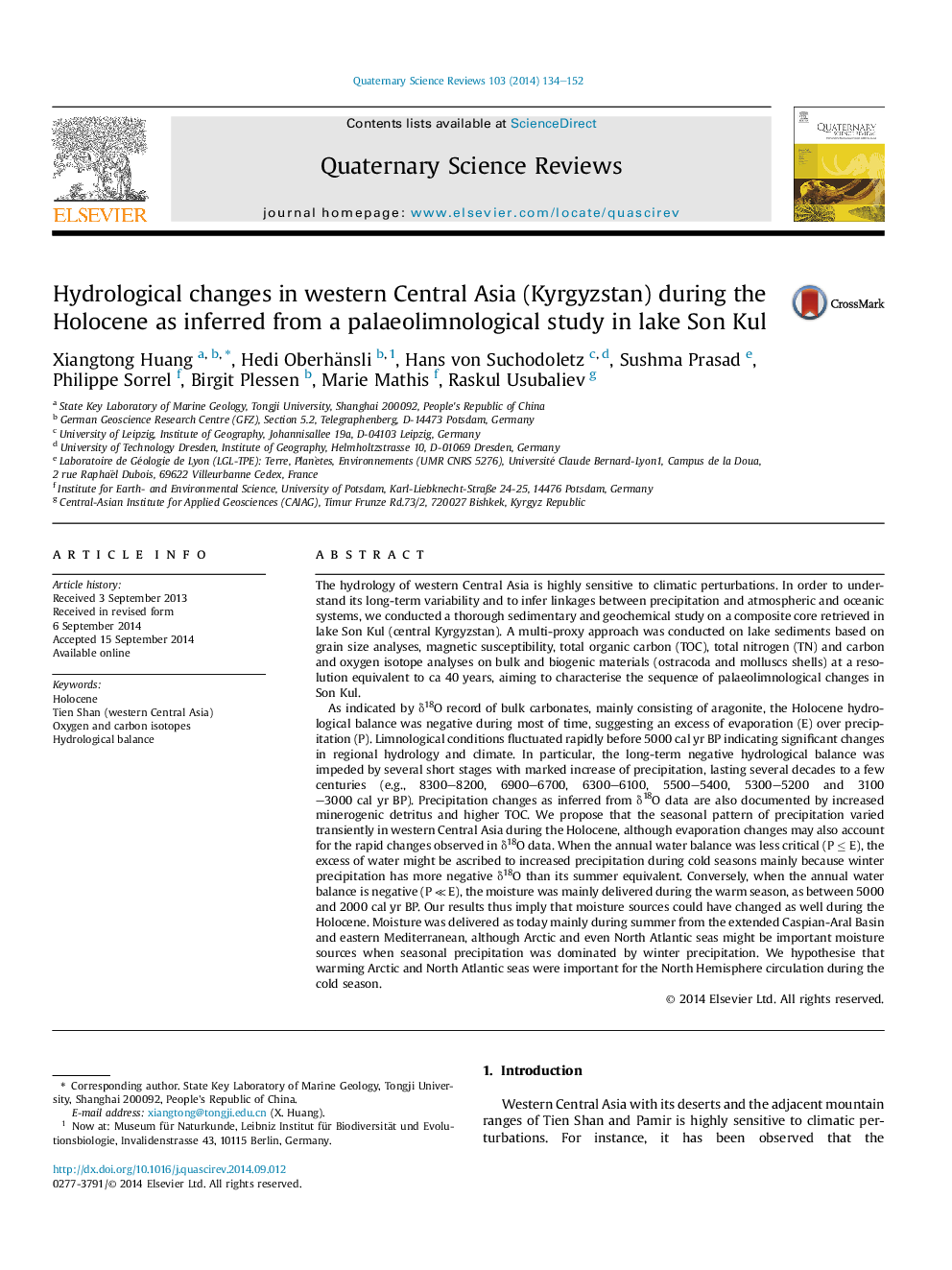| کد مقاله | کد نشریه | سال انتشار | مقاله انگلیسی | نسخه تمام متن |
|---|---|---|---|---|
| 6446774 | 1640831 | 2014 | 19 صفحه PDF | دانلود رایگان |
عنوان انگلیسی مقاله ISI
Hydrological changes in western Central Asia (Kyrgyzstan) during the Holocene as inferred from a palaeolimnological study in lake Son Kul
ترجمه فارسی عنوان
تغییرات هیدرولوژیکی در آسیای مرکزی آسیای مرکزی (قرقیزستان) در طی هولوسن به عنوان یک تحقیق پائولو اقیانوس شناختی در دریاچه سون کول
دانلود مقاله + سفارش ترجمه
دانلود مقاله ISI انگلیسی
رایگان برای ایرانیان
کلمات کلیدی
هولوسن، تیان شان (غرب آسیای مرکزی)، ایزوتوپهای اکسیژن و کربن، تعادل هیدرولوژیکی،
موضوعات مرتبط
مهندسی و علوم پایه
علوم زمین و سیارات
زمین شناسی
چکیده انگلیسی
As indicated by δ18O record of bulk carbonates, mainly consisting of aragonite, the Holocene hydrological balance was negative during most of time, suggesting an excess of evaporation (E) over precipitation (P). Limnological conditions fluctuated rapidly before 5000 cal yr BP indicating significant changes in regional hydrology and climate. In particular, the long-term negative hydrological balance was impeded by several short stages with marked increase of precipitation, lasting several decades to a few centuries (e.g., 8300-8200, 6900-6700, 6300-6100, 5500-5400, 5300-5200 and 3100-3000 cal yr BP). Precipitation changes as inferred from δ18O data are also documented by increased minerogenic detritus and higher TOC. We propose that the seasonal pattern of precipitation varied transiently in western Central Asia during the Holocene, although evaporation changes may also account for the rapid changes observed in δ18O data. When the annual water balance was less critical (P â¤Â E), the excess of water might be ascribed to increased precipitation during cold seasons mainly because winter precipitation has more negative δ18O than its summer equivalent. Conversely, when the annual water balance is negative (P âªÂ E), the moisture was mainly delivered during the warm season, as between 5000 and 2000 cal yr BP. Our results thus imply that moisture sources could have changed as well during the Holocene. Moisture was delivered as today mainly during summer from the extended Caspian-Aral Basin and eastern Mediterranean, although Arctic and even North Atlantic seas might be important moisture sources when seasonal precipitation was dominated by winter precipitation. We hypothesise that warming Arctic and North Atlantic seas were important for the North Hemisphere circulation during the cold season.
ناشر
Database: Elsevier - ScienceDirect (ساینس دایرکت)
Journal: Quaternary Science Reviews - Volume 103, 1 November 2014, Pages 134-152
Journal: Quaternary Science Reviews - Volume 103, 1 November 2014, Pages 134-152
نویسندگان
Xiangtong Huang, Hedi Oberhänsli, Hans von Suchodoletz, Sushma Prasad, Philippe Sorrel, Birgit Plessen, Marie Mathis, Raskul Usubaliev,
